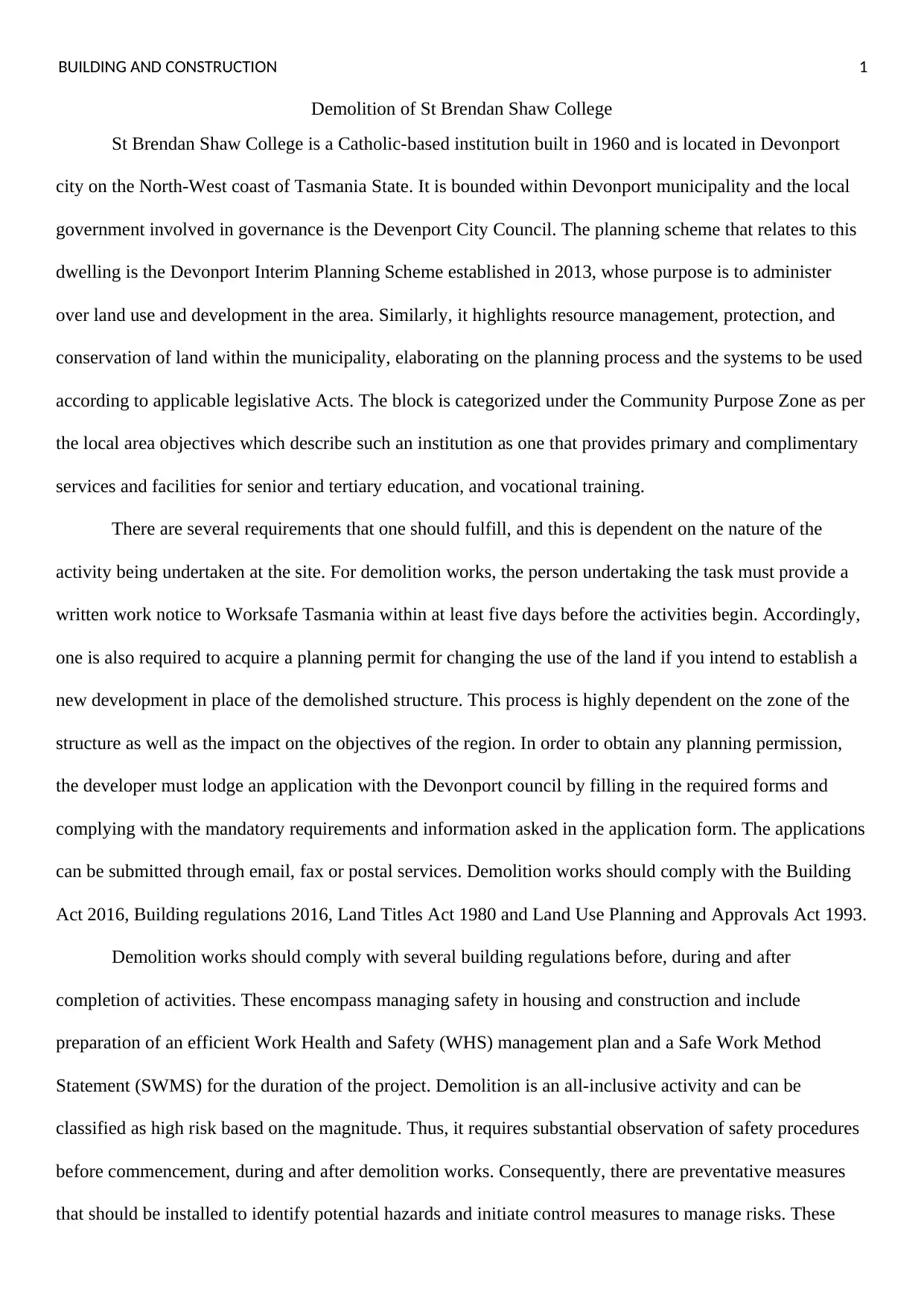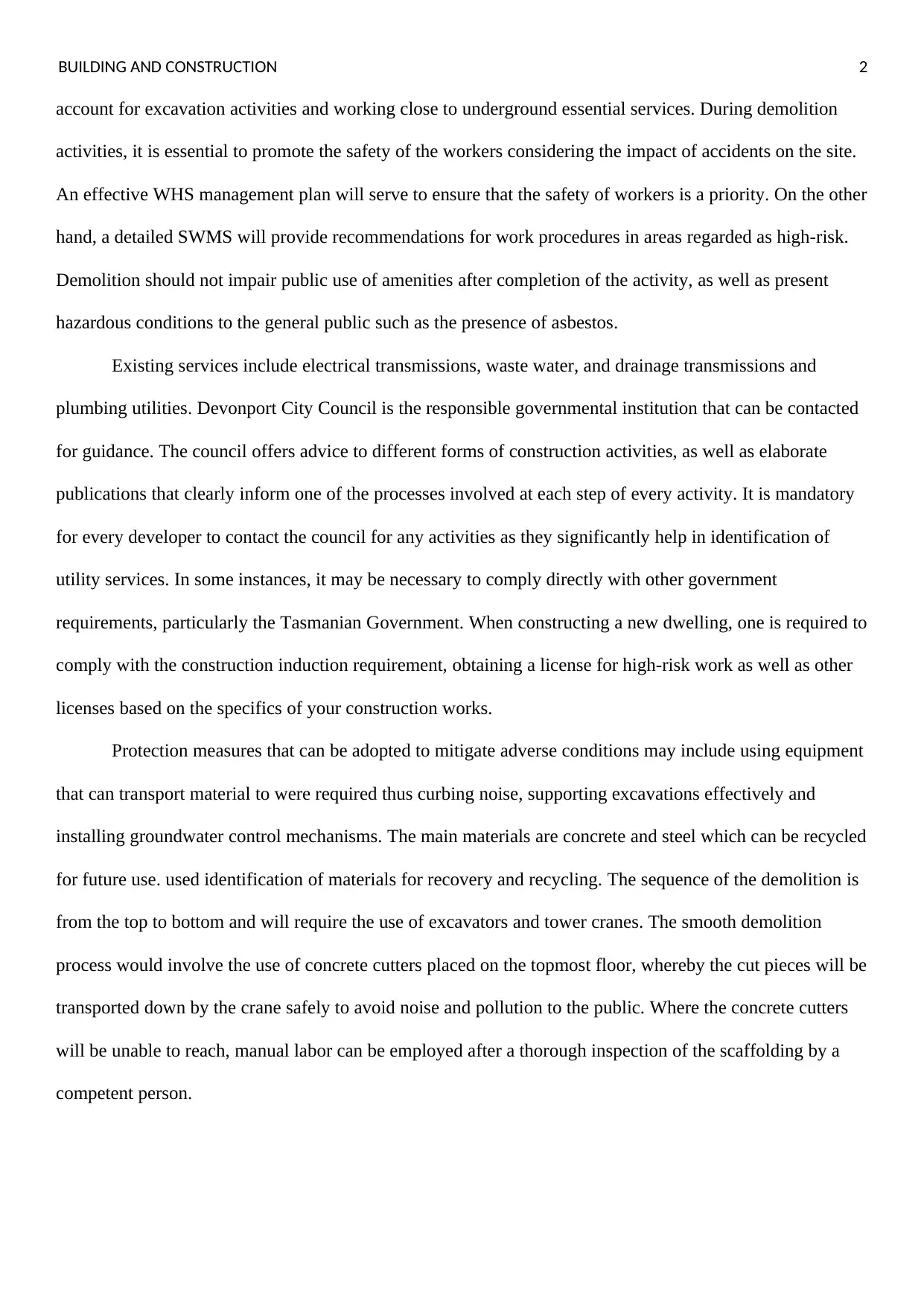Demolition Project Report: St Brendan Shaw College, Devonport
VerifiedAdded on 2022/11/13
|2
|853
|275
Report
AI Summary
This report provides a comprehensive analysis of the demolition of St Brendan Shaw College in Devonport, Tasmania. It details the planning scheme, zoning, and compliance requirements set by the Devonport City Council. The report outlines the relevant building acts and regulations, including the Building Act 2016 and Building Regulations 2016, as well as workplace health and safety (WHS) compliance, emphasizing the need for a WHS management plan and a Safe Work Method Statement (SWMS). It addresses existing services, such as electrical, wastewater, drainage, and plumbing, and highlights the importance of contacting the Devonport City Council for guidance and service identification. Furthermore, it describes the demolition process, including material recycling, and the sequence of demolition from top to bottom using excavators and cranes, ensuring public safety and minimizing environmental impact. The report also covers preventative measures, hazard identification, and risk control to protect workers and the public during demolition activities.
1 out of 2








![[object Object]](/_next/static/media/star-bottom.7253800d.svg)